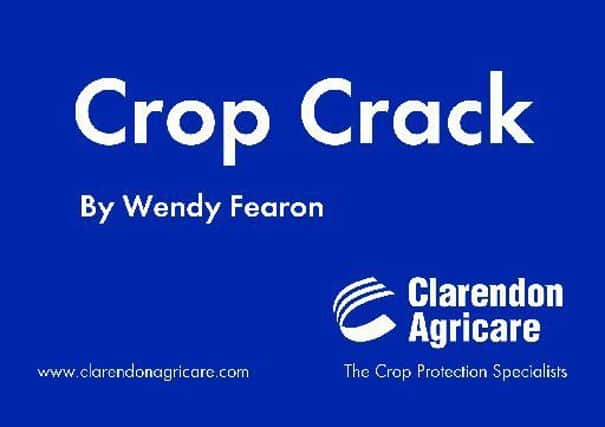Control of Annual Meadow Grass (AMG) is a priority


Control of Annual Meadow Grass (AMG) is the first priority in all crops if not already done with an autumn treatment. OTHELLO is an excellent contact solution for AMG in wheat in the spring, however there is no similar contact option for barley.
None of the autumn products will control AMG beyond the mid tillering stage, yet they are the only AMG options for barley. Note that the actives in OTHELLO that control AMG (iodosulfuron and mesosulfuron) will only control AMG that has already emerged; unlike the autumn actives these are not residual and have no pre-emergent activity.
Advertisement
Advertisement
In addition they require the weeds to be growing actively so delay its use until all grasses have emerged and temperatures have risen to allow growth to have resumed.
OTHELLO will also control a wide range of pre or early post emerged broad leaved weeds, but where these weeds have size then a contact product needs to be added to ensure larger overwintered BLW are controlled effectively.
The cheapest option is DUPLOSAN, improving control of chickweed, fumitory and cleavers, but is temperature sensitive, therefore needs a milder spell to work properly.
Where the AMG has been controlled in the autumn but for example over-wintered chickweed, cleavers or groundsel are problem weeds now, SPITFIRE is a more effective option controlling these and most other emerged BLW.
Advertisement
Advertisement
It also works best when the weeds are growing actively and has post em activity only, therefore delay use until all cleavers have germinated and temperatures have risen to encourage growth.
Brome grass and wild oats
Brome grass infestations are becoming more prevalent right across the province. Last season in particular saw a significant increase in the numbers of infested fields, with rye brome appearing in quite a number of winter barley crops where it was not previously present.
Effective control can only be achieved using a combination of cultural and chemical control methods.
Cultural control methods (break crops, stale seedbeds)
Chemical control then is a sequenced approach of an autumn treatment followed up with a spring treatment. CRYSTAL at 4lt/ha in the autumn was the first part, and should have been applied to wheat and barley. The follow-up then in the spring is BROADWAY STAR but note this product can only be used on wheat. There is no follow-up brome product available for barley and therefore in a severe infestation situation, only wheat allows effective control.
To avoid crop damage, do not spray any crop under stress.
Advertisement
Advertisement
Note that performance of some wild oat/brome herbicides can be adversely affected by other herbicides used on the crop. To avoid these antagonisms, a minimum time interval must elapse between applications of the various herbicides.
The need or not for a T0 treatment
Rhynchosporium and Septoria are the two most damaging cereal diseases in Northern Ireland.
Both have always been more effectively controlled protectantly, but in previous times where the curative properties of the azoles were able to rescue a bad situation later, particularly in wheat this is no longer the case.
Growers must now change their approach, looking to keep ahead of both diseases by starting earlier than before and maximising the protectant activity of the chemistry available then right through to crop senescence.
Advertisement
Advertisement
In barley the lower leaves contribute more to grain fill than the upper leaves. Therefore, particularly in a year like this where crop was drilled early last autumn, plants are forward and disease is already present. So a relatively cheap T0 applied now will reduce the level of inoculum present keeping the newly emerging leaves clean and allow the T1 be better timed and protectant focused.
Most of the azoles still have good curative activity on Rhyncho and the addition of morpholine will strengthen this as well as control Mildew.
With virtually no curative activity available in wheat, maximising protectant activity is paramount.
Multiple modes of action in the tank is also essential, ensuring control of all strains of Septoria. Whilst only ever having had protectant activity, chlorothalonil has multiple modes of activity and as a result still controls all strains of Septoria including those now resistant to the various azoles.
Advertisement
Advertisement
This makes it an essential partner at all timings, supporting the azole and SDHI chemistry to control all strains and help slow the build-up of resistance.
Application of a T0 introduces Septoria and rust protection early, allowing the T1 be better timed and still targeted at protectant activity. For most situations a triazole/chlorothalonil mix will work well.
Growth regulation - managing thin crops
When applied before 1st node, GS31, application of certain chlormequat growth regulators can significantly increase tiller numbers. Chlormequat works by suppressing apical dominance, ie main stem development. In doing so it diverts the plant’s resources into producing and supporting more tillers.
Particularly in wheat but in barley also, more tillers will go a long way towards compensating for low plant counts, ultimately increasing yield.
Advertisement
Advertisement
Correct timing is critical to maximise this effect. The earlier it is applied during tillering the greater the tiller effect, but note early application to increase tiller numbers will also reduce its effect on lodging.
Application of a chlormequat based growth regulator often goes on with a T1 fungicide application sometime around 1st-2nd node, GS31-32. At this timing it is too late to affect tiller numbers and survival but will maximise the stem stiffening effect.
Early application will also increase root growth and so reduce stem-base lodging. Stem-base lodging is where the plant folds over at the soil surface as a result of poor anchorage in the soil, and is caused by poor root ball development.
Selon has been widely used here in Northern Ireland for some years and works consistently in temperatures as low as 1°C.